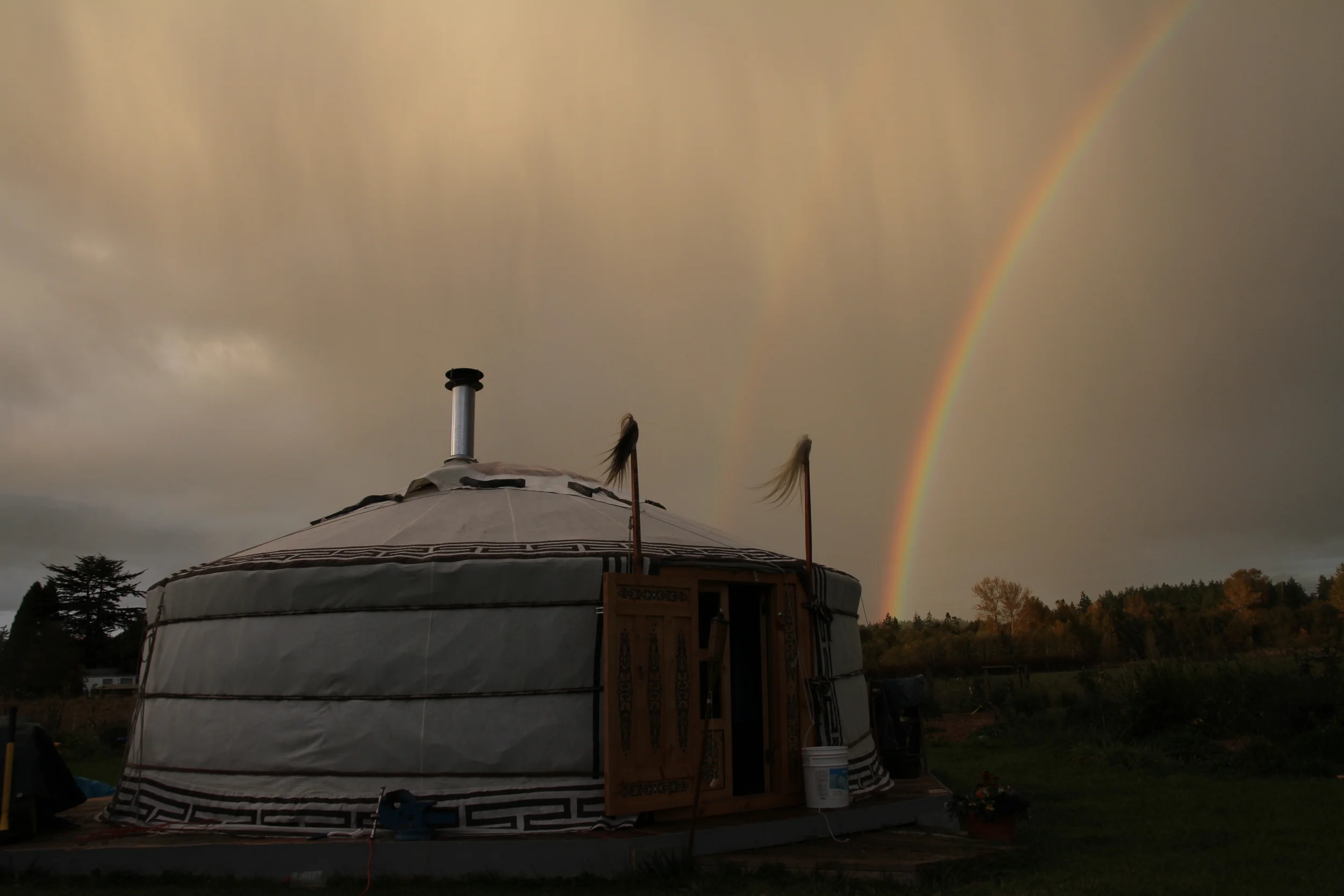Rain
We can get more rain (Seattle) in one week then Mongolia may get all year. There is no denying that continuos wet conditions will produce mold and mildew in any type of living space. For yurters we just need to learn how to prevent it.
Layers: Inside to Out
First Layer; This layer gives the yurt its cozy feeling. Imagine being encompassed by a large wool blanket (you are). Wool is an amazing wicker of moisture it allows moisture to pass through without retaining it in the fibers. Mold and mildew can’t grow without a moist environment. Wool also has a natural oil called Lanolin that defends from moisture. Moisture needs to be able to pass through wool so ventilation and breathability are very important.
Second Layer; the 24oz woven green canvas is very similar to military canvas. This is technically water resistant, because it absorbs water and uses the surface tension to keep the water from entering. If you’ve ever stayed in a canvas shelter you will remember that if you are touching the walls your hand will get wet, but if you are off of the wall you stay dry. Wax treated canvas is waterproof but does not allow the yurt (felt) to breath. Same with plastic artificial materials. To aid in the health of the felt we go with the breathable heavy weight green canvas. The seams of the canvas can be treated with wax because they can leak overtime.
Third layer; Is the outer decorative layer. Made of cotton. This layer gives your yurt the mongolian aesthetic. Spray natural oils on this layer to aid in the prevention of mold (vinegar works great). If it is untreated wet and above freezing it will surely start to mold in one months time. This layer even when moldy still makes the yurt look real sharp. It takes the brunt of UV damage and protects the canvas. Plus if it doesn't have a few mildew stains then it isn't truly authentic.
Fourth Layer; The fourth layer is an optional layer and it is for those who really experience lots of rain and want that extra piece of mind. Between the felt and the canvas, cover the yurt in Tyvek house wrap (name brand only). This still allows the felt to breath and gives another layer of moisture barrier. I would suggest doing this only in the really rainy climates.
Mildew Mold
To prevent mold and mildew you need to show your yurt a little TLC. Before setting up your yurt, treat all bare wood with boiled linseed oil especially the lattice. The linseed oil protects it from moisture, extends its resistance, and gives it a nice shine. This can be a tedious process but much easier then getting behind your furniture to wipe away mildew.
Love to your yurt is a fire in its wood stove. When you light a fire or have a source of heat in the yurt, the warm air pushes the moist air out. This is why it is so important we only use breathable materials. It also loves to have its sides rolled up a few feet on a hot day to let in a fresh draft.
Mildew on the outer decorative and interior canvas can be prevented with 100% vinegar. Spray or wash your covering at set up and apply as needed. There are 100's of products on the market, give some a try and let us know how they worked.
Wind
The Mongolian Yurt has many structural pieces made of wood with three layers of very heavy coverings. The low lying ceilings and circular shape deflect wind. Mongolians will usually tie a couple ropes to large rocks to also aid in support but they definitely don’t fix themselves to any foundations. Although for your own piece of mind, you could easily do so. The heavy layers of materials also absorb the wind so that it doesn’t sound like your walls are flapping for take off. This makes sleeping in a wind storm much more peaceful.
Snow
The 80 wood rafters and crown supports are very strong pieces of wood. They can support a person walking around on top of them with careful steps. So when it comes to snow you can let it accumulate without great concern. If you have a fire inside the yurt, you will be melting the snow at about half the speed as its accumulating. Although we have found it is not good to let it accumulate for too long. The snow compromises the breathability of the materials and you will begin to condense moisture on the interior felt. Pull off the snow with a broom, and in just a couple of hours of wood stove heat the moisture will pass right on out.

